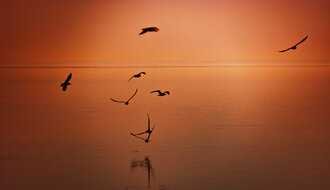BALATORIUM Artist Residency I - Artists in Residence (AIR) Programme in the heart of Tihany
BALATORIUM is a collaborative venture of researchers and artists for Lake Balaton. The aims of the joint project of the VEB2023 European Capital of Culture (ECOC) programme and PAD Foundation are to make the complex ecosystem of the lake visible through cultural and artistic activities and to contribute to the social dialogue on vital issues concerning its future. An important part of the project was the two-week BALATORIUM Artist Residency programme, attended by domestic and foreign artists, at the Balaton Limnological Research Institute in October. We talked with the participants about their plans and experiences.
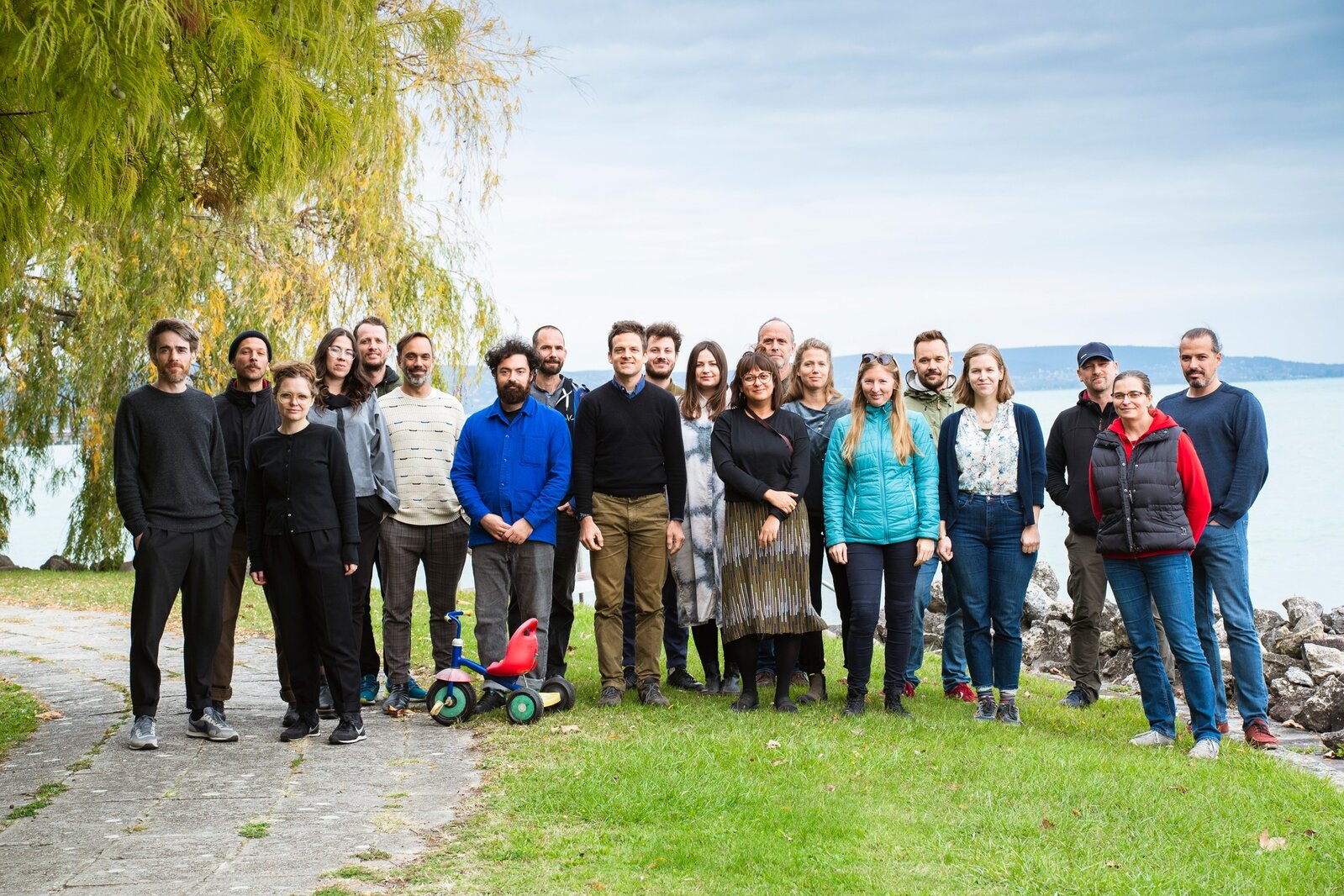
The Balatorium Team - Photo: Zsuzsa Simon
The BALATORIUM Artist Residency I is a two-week programme with Hungarian and foreign artists working alongside researchers from the Balaton Limnological Research Institute and outside experts to explore themes that address the ecological challenges of the lake and the region. They will present their work at the Balatorium Ecology x Culture Week in the summer of 2023. During the residency programme, the artists and researchers have focused on making the site-specific local ecological issues affecting Lake Balaton visible. In doing this, we wanted to emphasise the complexity of the Balaton's natural ecosystem in works of art
- says Diána Berecz, head of PAD Foundation and one of the organisers of the BALATORIUM project.
The Creators
Fuzzy Earth, the Hungarian-Austrian duo
Fuzzy Earth is an international art collective and research project dreamed up by Hungarian-born Tekla Gedeon and Austrian Sebastian Gschanes.
"Fuzzy Earth balances on the borderlines of art, architecture, botany and horticulture. Our main interest is exploring the relationship between nature and technology," says Tekla. "Basically, we are exploring the complex system of the workings of our world. In a world where everything is interconnected one way or another, there are no sharp boundaries between things. That's where the name 'fuzzy' comes from because we live on a fuzzy, very fuzzy planet." Sebastian adds.
The BALATORIUM AIR project will also investigate, with the help of scientists from the Institute, the extent of the effects of human activities on the soil and the ecological impact of agricultural fertilisers used in the lake’s catchment area. Although they have often worked with scientists in the past, for them, it was a particularly stimulating experience to work with the Tihany researchers. The scientists brought many strange stories and curiosities to their attention, helping them better understand and appreciate the scientific background of the project.
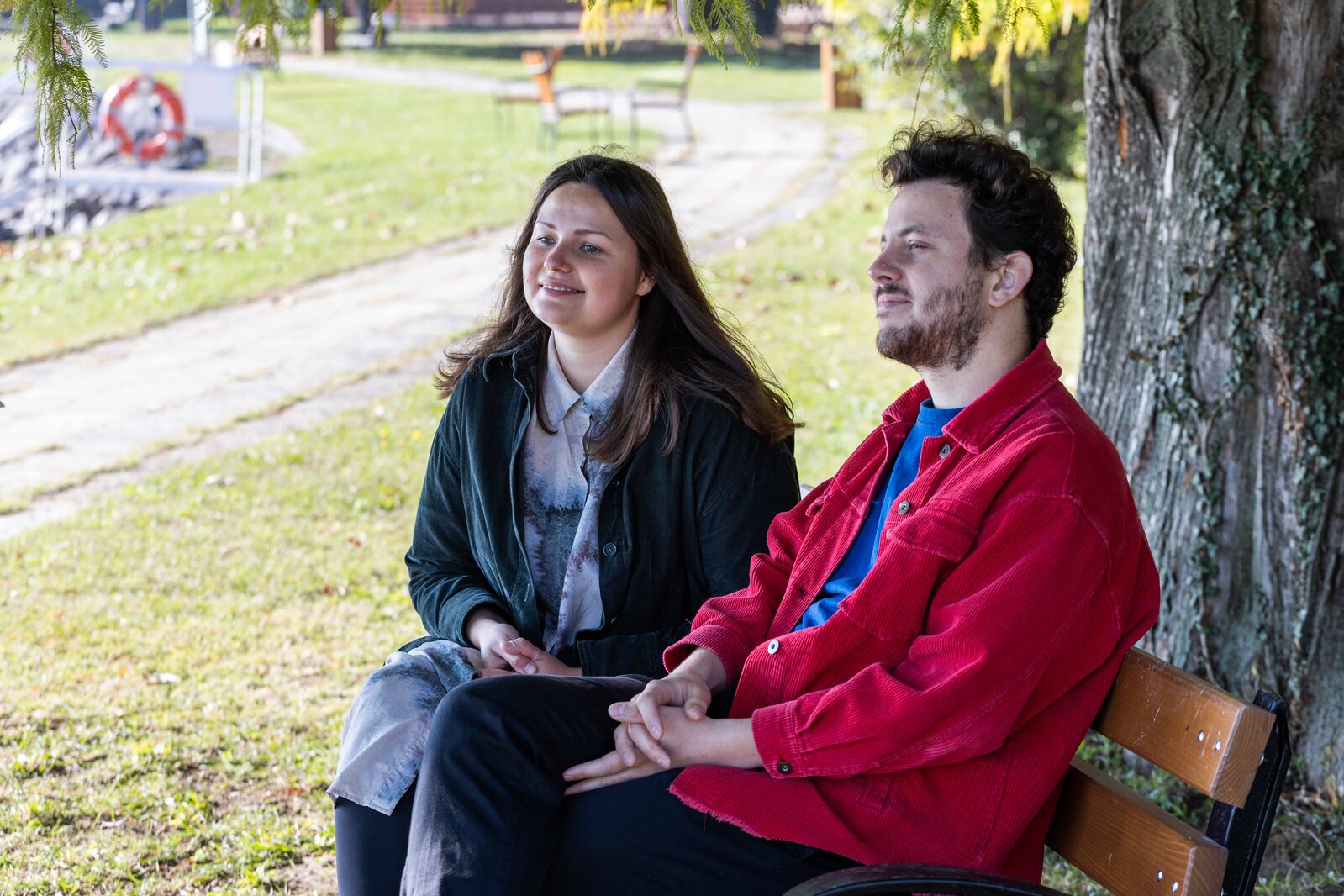
Tekla Gedeon and Sebastian Gschanes - Photo: Csaba Toroczkai
Tekla is a frequent visitor to the lake, and Sebastian is no stranger to Lake Balaton either.
As an outsider, it is clear that Hungarians are proud of Lake Balaton and the surrounding region. At the same time, you can't ignore the amount of development going on around the lake and the fact that the agricultural processes in the area are taking a toll on the land. These are issues we just have to talk about.
In addition to doing hands-on research at the Institute, the artists have also explored the area on small excursions.
"We are particularly interested in the Balaton Uplands and the northern shore from an agricultural point of view. This landscape includes commercial and home gardens, industrial and agricultural lands, wheat fields and vineyards. We collected soil samples from these agricultural areas and, with the help of the researchers, analysed and tested them for phosphorus. We were curious how fertilisation affected the environment and wanted to visualise this material that we can't see but which is all around us," says Tekla.
The New Liquidity – An artist duo from Berlin
Selma Boskailo, a Bosnian curator, researcher and artist, and Anders Ehlin, a Swedish composer and sound artist, based in Berlin, form The New Liquidity. This duo is developing an ongoing project of site-specific immersive binaural soundwalks, reactive to participant’s movements and locations.
Both have visited Balaton before. Selma even spent time there as a teenager. Anders says the area is decidedly very unique.
The landscape is absolutely stunning, and the mixed climate is amazing. When we started working with the researchers, they opened our eyes to many things. We also realised how many different layers interact with each other. That makes Balaton and its surroundings very special.
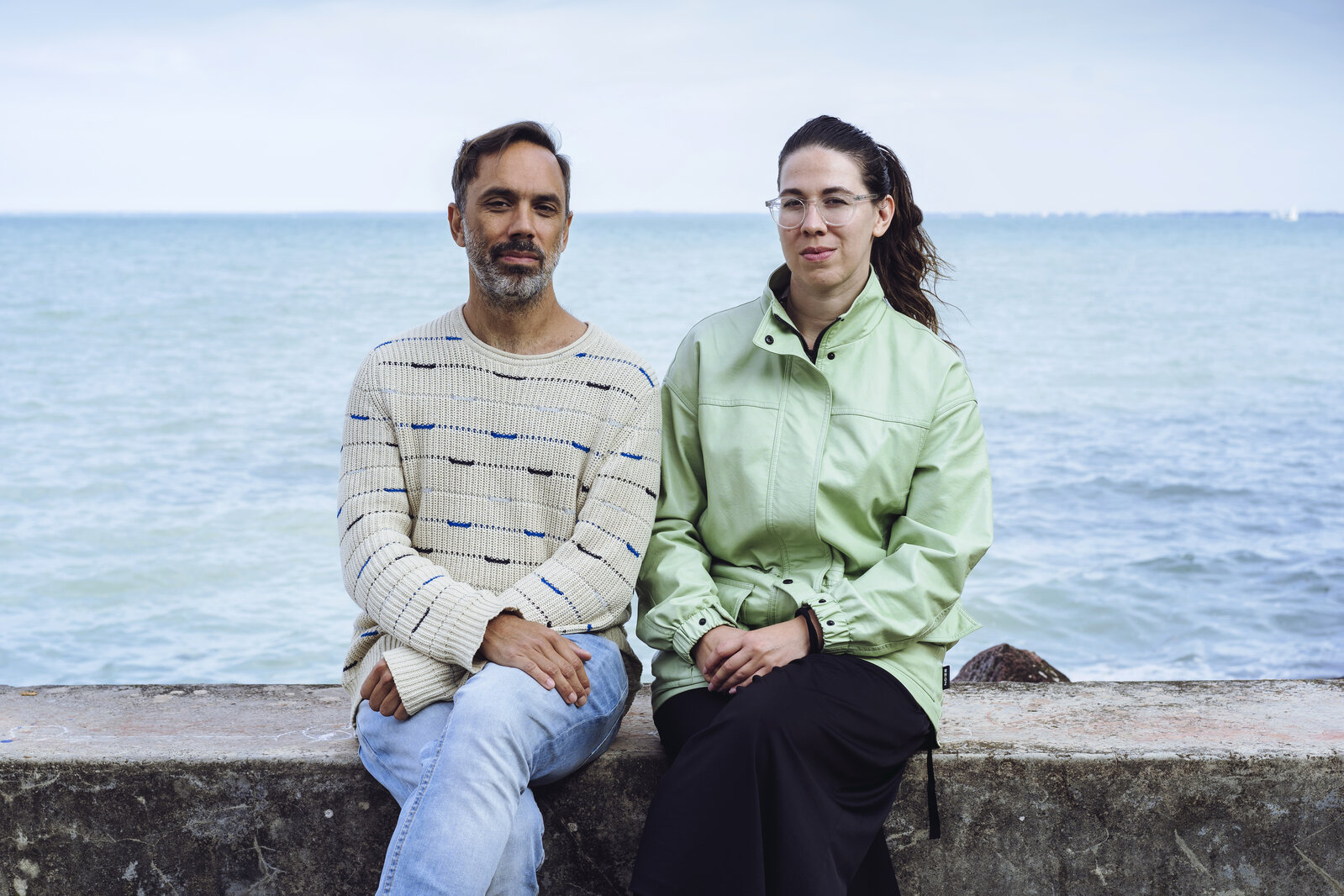
Selma Boskailo and Anders Ehlin - Photo: Zsuzsa Simon
During their two-week stay, they focused their research on the environmental landscape of Lake Balaton.
“We came here to develop a hybrid site-specific soundwalk. Through immersive technology and artistic research on acoustic ecology and biodiversity of freshwater ecosystems we want to examine water’s fluid heritage as a place of human/non-human memory,” – Selma explains the essence of their research.
As the team deals predominantly with sounds, one of their biggest challenges was finding a location where their work could be exhibited. They hope to finish it over the coming year. As a part of their research, they joined researchers on several fish-collecting expeditions.
"What was surprising as we collected the fish was how Lake Balaton is changing: there are huge differences in water quality and turbidity between the north and south shores. We're here to explore the lake as a kind of archive and transitional space," says Anders. "We are not scientists or ecologists, so for us, the information we get from the researchers who work here is of special value," - adds Selma.
An artist couple from France
Marie Ouazzani and Nicolas Carrier, from Paris, have been living and working together for seven years. With the help of videos, images and installations, their work focuses on the changing urban environment, the symbolic spaces of globalisation, climate change and its impact on wildlife.
The duo differs from other teams in that they not only collected information during the residency programme but also recorded the necessary footage for a video installation during the two weeks. The installation will use panoramic images projected on two side-by-side screens. The text, a vital element accompanying the video, will be available in several languages, including Hungarian.
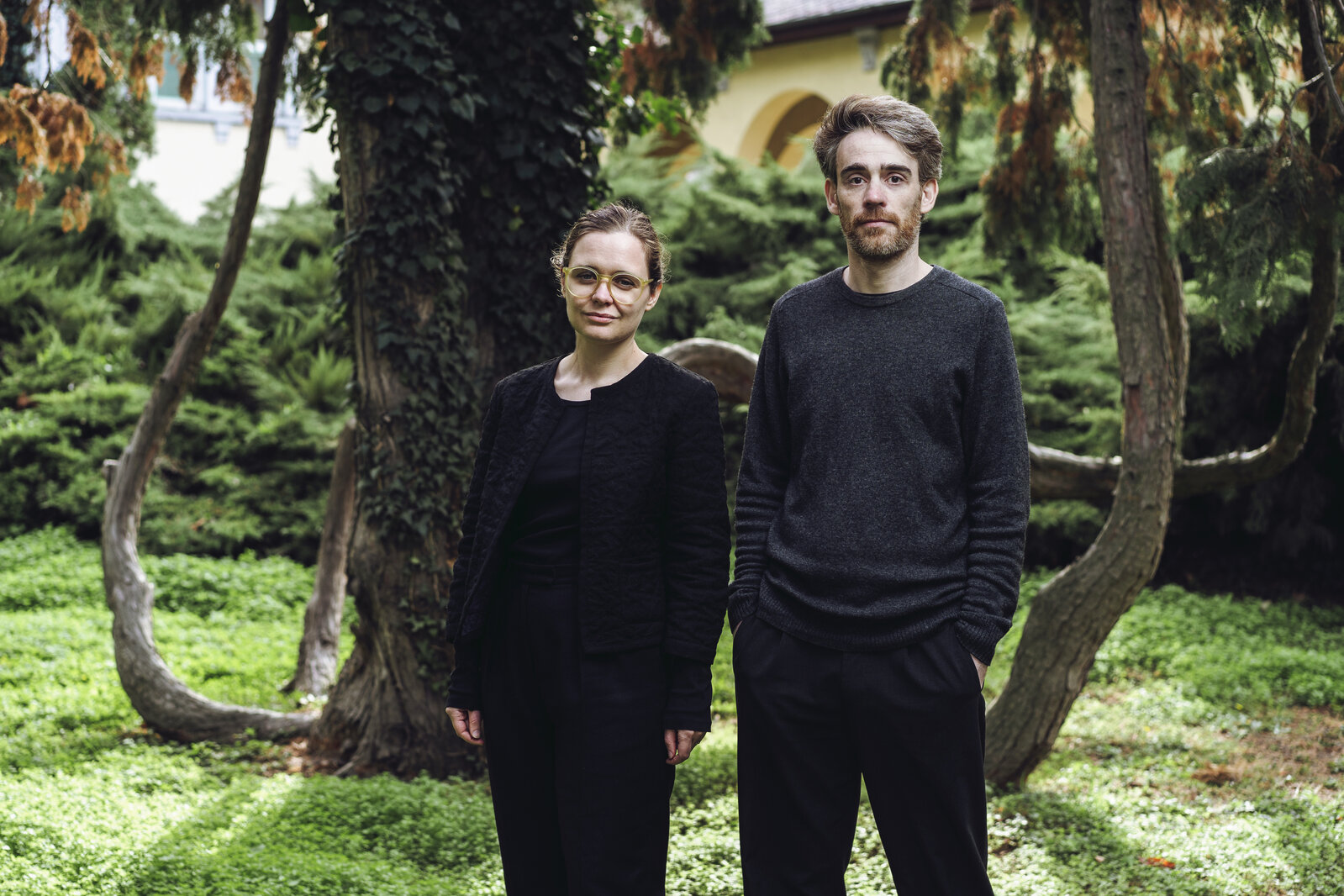
Marie Ouazzani and Nicolas Carrier - Photo: Zsuzsa Simon
"As a little girl, I lived in Budapest for five years and visited Lake Balaton twice, so there was a personal motivation for me to come to BALATORIUM AIR. I can say that my childhood is connected to Hungary and is part of my life", - says Marie, explaining one reason for their application.
We work in urban spaces, making the confrontation between vegetation and architecture visible. We try to create panoramas with elements of an imaginary ecosystem, drawing from the past and the present. We also develop hypotheses about the future evolution of the ecosystem. For example, how will the climate crisis manifest itself at a particular point in the future? How will certain plants respond?
- This is how Nicolas explains their main activities. They are exploring the vulnerability of Lake Balaton and the changing properties of its waters, and perspectives allowing us to look at the lake's waters as a remedy or a poison.
On home ground
Trailing algae
In addition to international participants, two Hungarians took part in the residency programme. One of them, Ádám Ulbert, is a visual artist, currently a doctoral student at the University of Fine Arts. His research focuses on the ecology and the possibilities of science fiction in the visual arts by creating paintings, sculptures and videos. On arrival, he planned to research the physical traces left by ecologist Raul France, who was once intimately connected to the region. He participated in the first great exploratory expedition to Lake Balaton in 1893 and worked primarily with plankton and diatoms.
"He was an artist who fused fine art with natural science. I thought of starting to research his legacy. In the end, I did not find personal data about him, only about his research, so that's the direction I ended up pursuing," – says Adam. He is no stranger to Lake Balaton, having spent summers at the lake as a child.
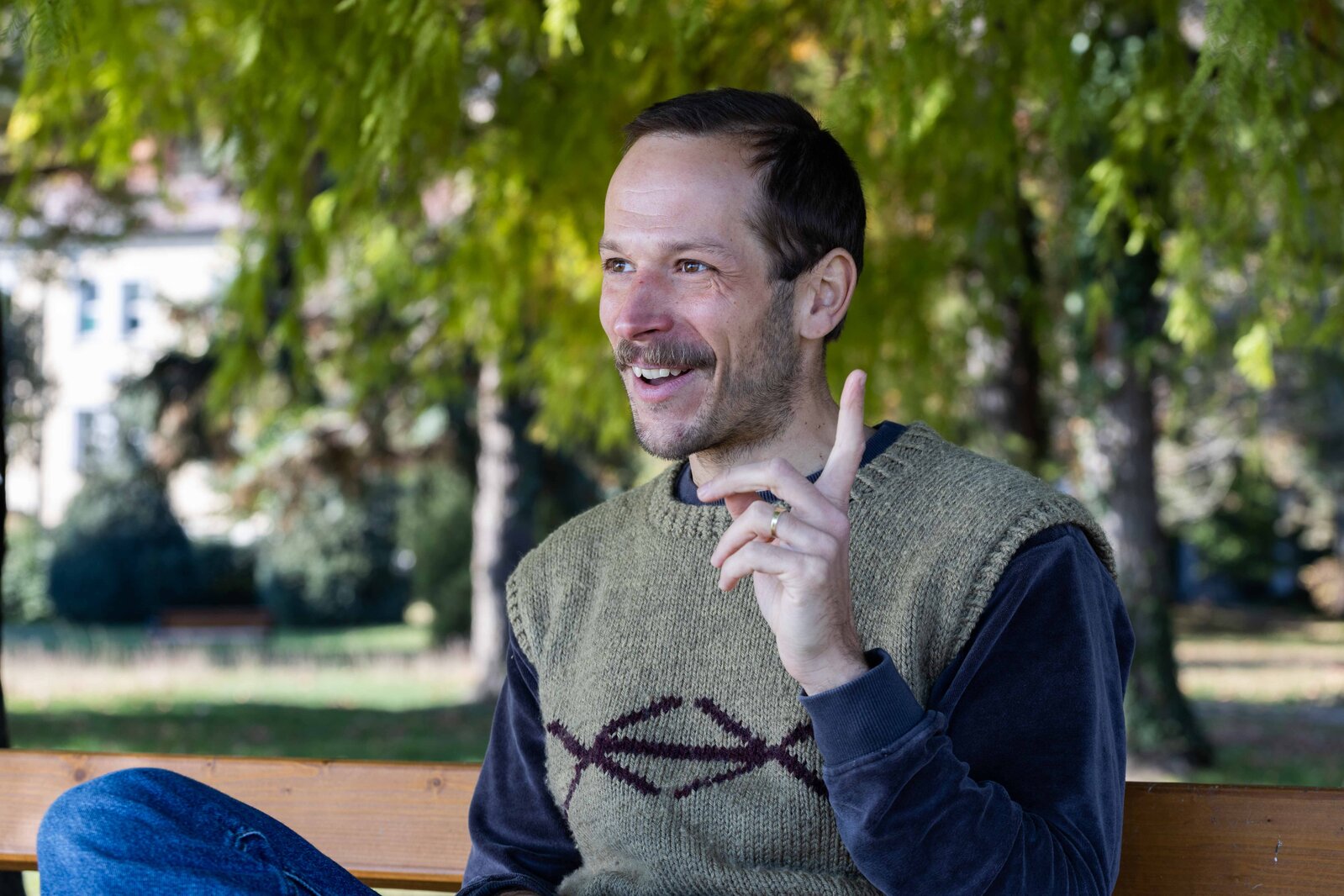
Ádám Ulbert - Fotó: Csaba Toroczkai
"My grandparents live in Siófok and my godparents in Aszófő, so I still spend a lot of time here. And the world of algae, which I am still researching, is something I remember as a child. This horizon of Lake Balaton is exactly what even a small child can comprehend; the microfocus of which is Lake Balaton, where water meets land."
During his residency, he studied algae with the scientists. Not only did he come up with ideas about a possible exhibition venue, but the planned exhibit itself is already beginning to take shape in his mind.
BALATORIUM AIR was a great experience because it allowed me to explore things I had only seen in drawings or videos. I had not been involved in the practical science part of the research previously, so I spent a lot of time in the alga laboratory, asking scientists specific questions. In addition, I have found one or two sources and situations that I know I will use to make a sculpture.
Trailing reeds on two wheels
The other Hungarian participant, Péter Mátyási, works in Budapest and graduated from the Hungarian University of Fine Arts in 2009 with a degree in painting and visual education. In his paintings and installations, he explores the relationship between personal and collective memory and the relationship between nature and man from different perspectives.
Péter also has close ties to Lake Balaton, having spent much of his childhood at the lake. He still returns, especially in summer. He came to the residency programme with specific plans; he wanted to continue a previous project in Tihany.
"I have a series in which I painted portraits of plants that are now extinct in Hungary, based on the Red List of endangered and extinct species. My original idea was to adapt this to the local environment and work it into a trail-like concept. It soon became clear that two weeks would not be enough to cover all the relevant sites around the lake, so I decided to focus my research on reeds. The reed beds are a habitat, a go-between ecology and geology, whose destruction strongly affects the number and spread of disappearing or endangered species, and thus the entire Balaton ecosystem," he says.

Péter Mátyási - Photo: Zsuzsa Simon
As Peter uses his bicycle almost daily, he brought his bike to Balaton to explore the area. The location could not have been more suitable, as the Balaton Bike Circuit section on the Tihany peninsula runs close to the water.
"The reeds are so close to the bike path that you can almost touch them as you pedal along. I felt a very decisive change in my interest there. I started thinking about how people define the shore, where the lake ends and where the shore begins. So, I decided to expand on the topic of reed beds and create an installation that would evoke feelings that we humans were the ones who introduced construction to the shore and disturbed wildlife there."
His artwork aims to raise awareness and direct the spotlight on the thin line between nature and the man-made environment. During the residency, he repeatedly scouted the shore to find the perfect location for his work.
I think a very topical subject is the reed bed. I was specifically looking for a prime location for cyclists, a busy place where many people pass through. I wanted to create an installation to take people out of their complacent patterns and make them think a bit.
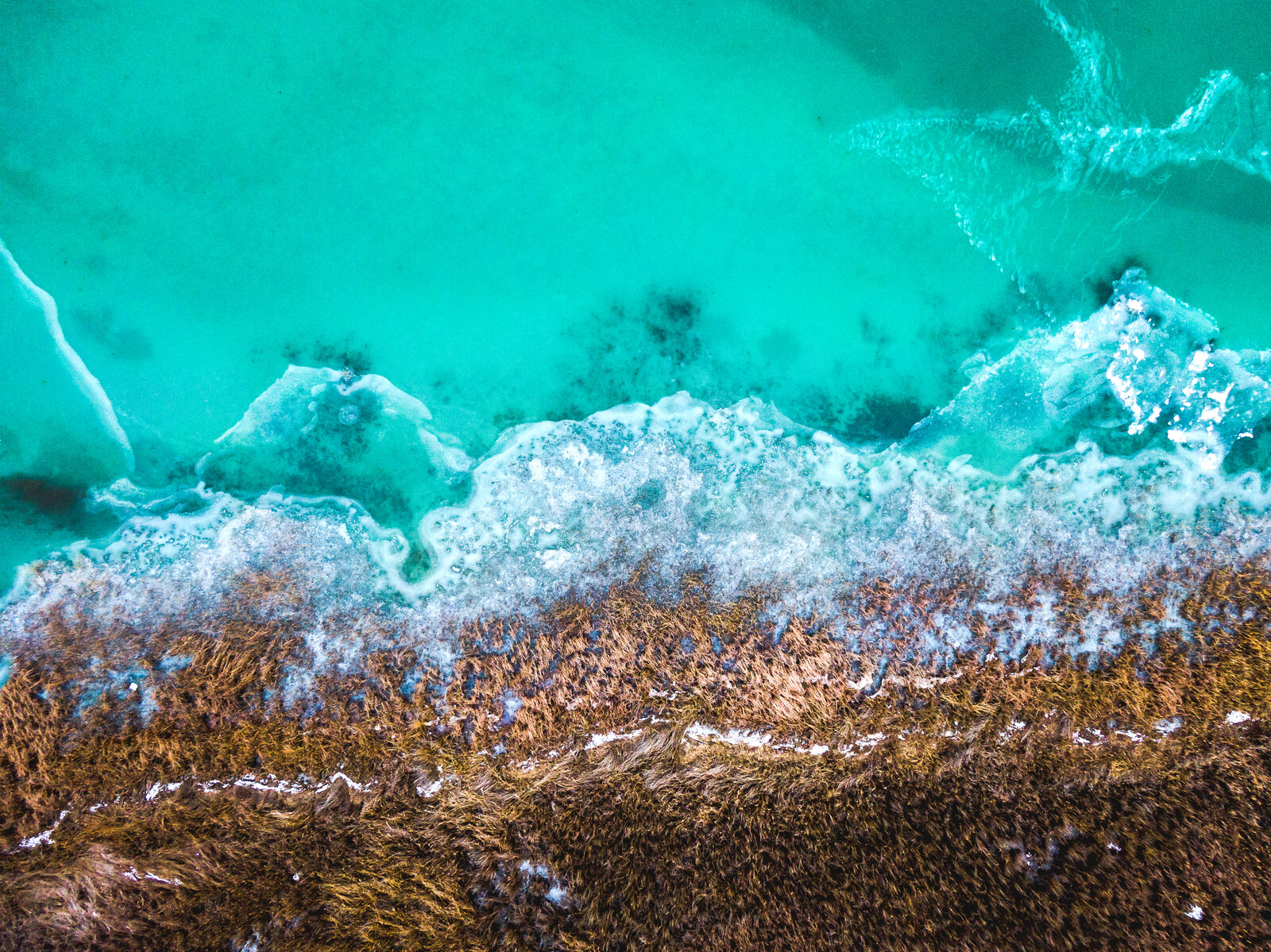
The programme will continue
The BALATORIUM AIR programme will continue after the autumn. Having done the research and gathered inspiration in October, teams will present their creations next summer during the ECOLOGY X CULTURAL Week. The programme’s second season will take place in spring 2023 in cooperation with the Directorate of the Balaton Uplands National Park.
